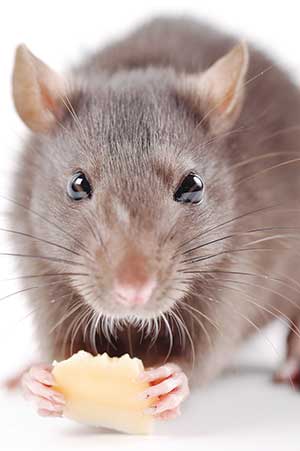|
Sniff or Smell
By Dr. Stuart Mitchell
Essential to acquiring odors, sniffing is a specialized respiratory behavior. Research suggests that rats’ sniffing may be ordinarily exhibited during motivational and social behaviors.
Research using radiotelemetry recordings (use of radio waves to transmit information from a distant instrument to a device that indicates or records the measurements) of nasal respiration found that a rat sniffing the facial region of another rat frequently causes decreased sniffing frequency of the rat being sniffed. Mutual exhibition of sniffing behavior was found to be dependent upon rat social status. Rats of lower social status decrease their sniffing frequency when alpha rats investigate their facial regions.
When lower-status rats fail to decrease their sniffing frequency, dominant rats become aggressive faster. Therefore, decreases in sniffing serve as signals of placation during rat social interactions. Interestingly, rats rendered unable to smell continued to exhibit mutual sniffing behaviors. This indicates independence of this sniffing behavior from smell. This discovery demonstrates that rats utilize sniffing behaviors to collect and convey information.

A rat’s sense of smell or olfaction begins when warmed air enters the nostrils. Air flows over an area called the olfactory epithelium (sensory area of tissue). This area contains olfactory neurons tipped with microscopic cilia (sensory hairs) projecting into a thin layer of mucus. Within the warm air are odor particles called odorants. Odorants bind to special receptors on the cilia of the olfactory neurons that trigger a response to the brain.
Notably, there are 500 to 1,000 types of olfactory receptors, which are coded for by 500 to 1,000 genes (about 1 percent of the rats’ genome). Within rats, 1 out of every 100 genes is associated with the detection of odors.
Acute, area-wide introduction of various non-human foreign odorants (especially volatile compounds or volatile organic compounds-VOCs) into the rats’ environment may produce unintended consequences. Of such consequences may be behavioral migration of rat populations into other areas, which widens the area of infestation as well as complicating elimination. It’s improbable that commensal rats are repelled by human odorants. Based upon identified and investigated rat populations, PMPs must be aware of such non-human foreign odorants and, where possible, avoid their introduction during implementation of professional census and active ingredient baiting controls.
|